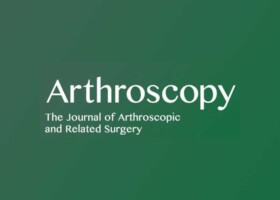
Authors:
Olivier A van der Meijden, Coen A Wijdicks, Trevor R Gaskill, Kyle S Jansson, Peter J Millett
Abstract:
Shoulder pain resulting from injury to the rotator cuff is commonly encountered in both primary care and shoulder clinics.1 The treatment of both partial-thickness and full-thickness rotator cuff tears is generally successful in reducing symptoms and functional deficits in afflicted patients. The success of surgical rotator cuff tendon repair, however, has been correlated to a number of factors, including size of the rotator cuff tear, tendon quality, magnitude of retraction, and fatty infiltration.
Massive rotator cuff tear (RCT) has been previously defined as a tear greater than 5 cm in length or a tear that involves 2 or more rotator cuff tendons. Recent literature would suggest that these tears are relatively common, with a reported prevalence rate between 9% and 25% of arthroscopically treated RCT. Although the evolution of double-row repair techniques appears to have enhanced the biomechanical properties of rotator cuff repairs, it has also been established that surgical repair of massive RCT, at a minimum of 1 year after surgery, results in a significant re-tear risk that may be as high as 94%. Therefore, it is apparent that satisfactory outcomes after operative management of massive RCT is not uniform, and consequently, new strategies are needed to improve patient outcomes after these injuries.
Ideally, the normal rotator cuff anatomy should be restored during repair. This can, however, be difficult in large tears because tendon retraction and muscle atrophy are often present. Though long a topic of debate, recent data finally showed both decreased re-tear rates and improved functional outcome when massive RCT undergoes double-row (DR) rather than single-row (SR) repair. However, both re-tear risk and functional outcome significantly depend on tendon mobilization during the repair.
To this end, repair augmentation with collagen scaffolds has recently been proposed to enhance the quality of repair when tendon quality and mobilization are not optimal. Repair augmentation as such has shown promising histologic and short-term clinical results when applying the scaffold as an "onlay" augmentation technique. Questions have been raised, however, as to whether (1) additional suture anchors or (2) a collagen scaffold, as may be required in the repair of massive RCT, would immediately have positive biomechanical effects on repair strength. "Additional suture anchors" refers to the use of 6 rather than 4 anchors in the repair.
The objectives of this study were to compare, in a massive RCT model, the biomechanical properties of SR repair; extended, linked DR repair; and extended DR rotator cuff repair augmented with a collagen scaffold. In addition, biomechanical properties of intact rotator cuff tendons were analyzed for comparison. The hypothesis was that the biomechanical properties of augmented repairs of massive RCT using a collagen scaffold would be superior to those of traditional SR repairs and equivalent to those of DR reconstructions without augmentation. In addition, the biomechanical properties of intact rotator cuff tendons were expected to be superior to those of any of the repair techniques.
For the complete study: Biomechanical Analysis of Two Tendon Posterosuperior Rotator Cuff Tear Repairs: Extended Linked Repairs and Augmented Repairs
